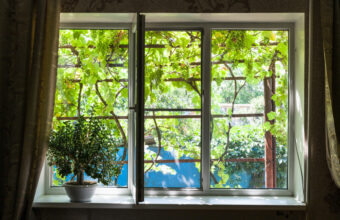Have you ever wondered why skyscrapers often feature tinted windows? Beyond the sleek appearance, tinted windows serve a practical purpose in enhancing comfort and efficiency within these towering structures.
Reducing Heat Gain and Glare
One of the primary reasons for tinting windows in skyscrapers is to mitigate heat gain and glare. As sunlight penetrates through windows, it can significantly increase indoor temperatures, leading to discomfort for occupants and higher cooling costs. Tinted windows are designed to block a portion of the sun’s infrared radiation, reducing heat transfer and keeping interiors cooler. Tinted windows help minimize glare, creating a more comfortable and productive indoor environment, especially in spaces with expansive glass facades.
Enhancing Energy Efficiency
Tinted windows play a role in improving the energy efficiency of skyscrapers. By reducing heat gain, tinted windows lessen the reliance on mechanical cooling systems, such as air conditioners, resulting in lower energy consumption and utility bills. This is particularly important in densely populated urban areas where energy demands are high, and sustainable building practices are prioritized. Tinted windows help to achieve energy efficiency goals while also reducing the building’s carbon footprint.
Protecting Interior Furnishings
Exposure to ultraviolet (UV) radiation from sunlight can cause fading and deterioration of interior furnishings, including furniture, carpets, and artwork. Tinted windows act as a barrier against UV rays, helping to preserve the integrity and appearance of interior spaces. By reducing UV-induced fading, tinted windows extend the lifespan of furnishings, saving building owners money on replacement costs and maintenance.
Improving Occupant Comfort and Productivity
The comfort of occupants is paramount in skyscrapers, where people spend long hours working, living, or visiting. Tinted windows contribute to a more comfortable indoor environment by regulating temperature, reducing glare, and providing enhanced privacy. When occupants feel comfortable and productive, it can positively impact morale, job satisfaction, and overall well-being.
Tinted windows are a practical and beneficial feature of skyscrapers, offering numerous advantages in terms of comfort, energy efficiency, and preservation of interior spaces. By reducing heat gain, glare, and UV exposure, tinted windows create a more comfortable, sustainable, and visually appealing environment for occupants. Whether it’s a towering office building, residential high-rise, or mixed-use development, tinted windows are a component of modern architecture, combining functionality with aesthetic appeal.






